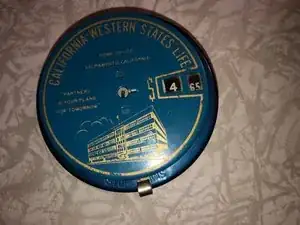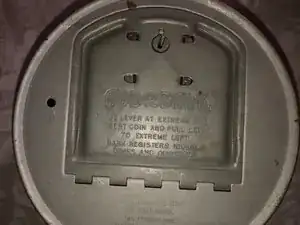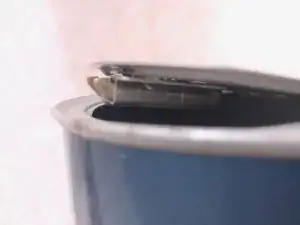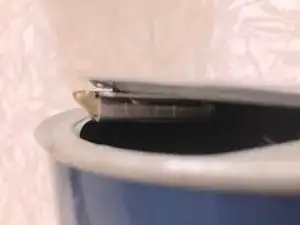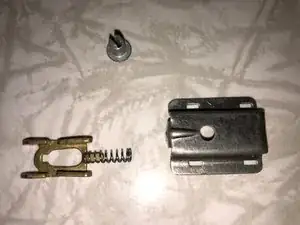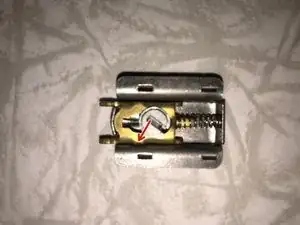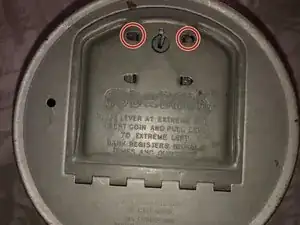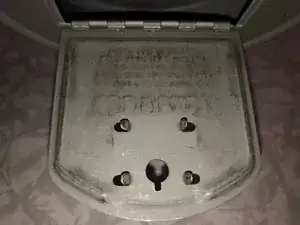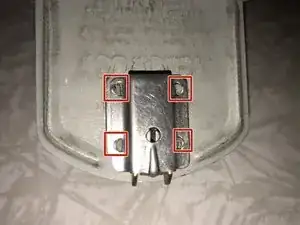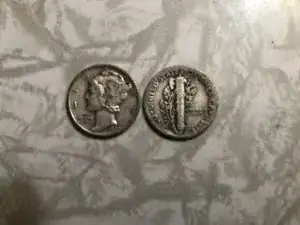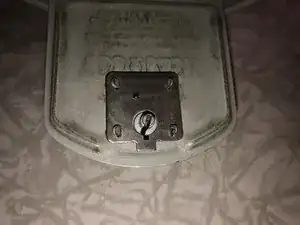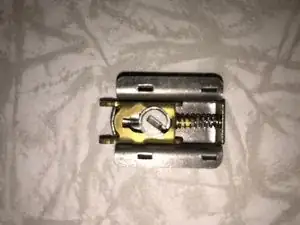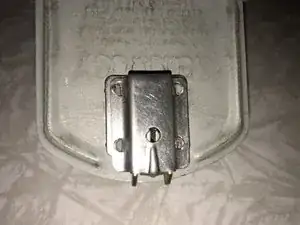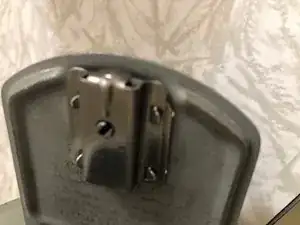Einleitung
The Add-O-Bank is a cleverly-designed coin bank from the 1940s. They were branded on top by many different businesses such as banks and insurance companies, but the underlying mechanism is the same. The bank displays the amount of money inside, by means of mechanical wheels.
To add a coin, a person inserts a coin into a slot and pushes a handle. The coin drops down into the bank, and the total contained in the bank is updated on mechanical dials.
A key is normally required to open the bank and see the treasures inside. After 80 years, most owners will have misplaced their keys.
This guide explains how you can get the coins out. If you are clever you can pick the lock with a paper clip. If (like me) you are not clever, you can easily “break the bank” while doing a minimum of damage, in order to get inside. Finally, the guide explains how to repair the damage you may have done while breaking the bank, returning it to its original condition.
-
-
Bend the paper clip into an "L" shape and insert it through the key slot. Using the end of the paper clip, feel for one of the two large metal stubs on the sides of the latch mechanism, indicated by the arrow. From the center of the lock cylinder, reach forward a little to engage the stub.
-
Push the latch back far enough to open the door.
-
-
-
If unable to pick the lock as described in the previous step, accessing the bank can be done by separating the lock from the door.
-
-
-
First put the lock mounting plate back onto the tabs. Then put the lock cylinder in place, wide side down.
-
Before you bend the tabs back into place, look at the Step 7 instructions.
-
-
-
Once the lock mechanism is back in place, bend down the metal tabs to secure the lock back in place. On the other hand, you may wish to keep the lock only loosely fastened to the door, so that you can easily reopen the coin bank at any time.
-
Who knew that breaking into a bank could be so easy?
